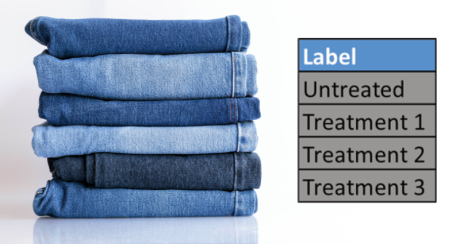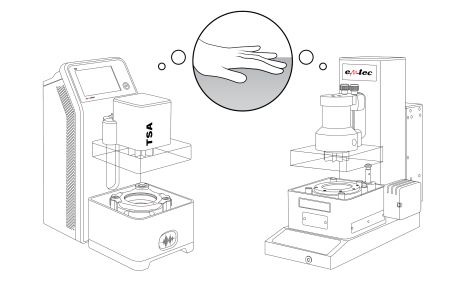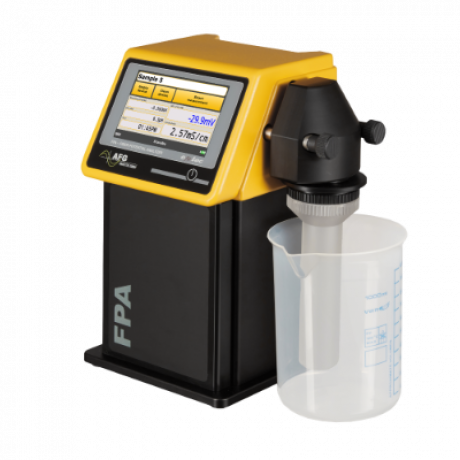TSA - Tactile Sensation Analyzer
The new emtec TSA Tactile Sensation Analyzer not only features a high-quality design, but also convinces with extended possibilities for determining haptic comfort. Additionally, the device captures a high-resolution picture of the sample and can be connected to a Virtual Haptic database (cloud-based).
The TSA measuring instrument and measuring method are internationally patented and protected.
Product description
The new TSA measures - like its previous model - the softness, smoothness and flexibility of base and finished products objectively and reliably. Moreover, specific hand feel values (HF) can be calculated from these parameters using mathematical models.
A fundamentally improved capability of determining the sample's springback behavior has been added to the new device. Furthermore, the new TSA offers the possibility to measure two additional parameters: thermal haptics (surface thermal conductivity) and thermal insulation. A camera can take a high-resolution image of the clamped sample in order to give the user a visual impression of the material and to carry out further analyses.
All of this data is automatically digitized and can be processed and stored according to customer-specific requirements through a cloud-based haptic database, the Virtual Haptic Library, making it available to authorized persons worldwide in real-time (quality assurance and control). Additionally, this Virtual Haptic Library enables a search for suitable fabrics worldwide, cataloged according to haptic properties.
Users
Application areas
Results
Smoothness / Roughness
Softness
Flexibility / Stiffness
Hand Feel (depending on mathematical models)
Plasticity (characterizing the recovery behaviour)
Hysteresis (characterizing the recovery behaviour)
Recovery / Springback behaviour
Elasticity (depending on recovery properties)
Thermal haptics / Surface thermal conductivity
Thermal insulation
High-resolution image from the sample






